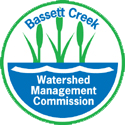“Lawn Chair” Gardens Support Pollinator-Friendly Yards
Wed, Mar 24, 2021Are you itching to get out to spruce up your gardens? After this unprecedented pandemic winter, it’s only natural to want to get a jump start on spring and gardening. But before you grab your tools and head out, please consider these pollinator-friendly practices that support our food supply. First, if you don’t already have gardens planted with wildflowers aka “native plants,” please consider adding some. Plants are considered “native” if they were found here at the time of European settlement. Native plants generally off much higher-quality nutrition (i.e. nectar and pollen) to pollinators and wildlife than cultivated varieties or non-native plants. Plants are the basis of any ecosystem and serve as the foundation to supporting our birds, bees, and butterflies, which in turn, supports a large portion of our food supply—especially nuts, fruits, and vegetables. Scientists say habitat destruction is largely to blame for declining pollinator populations. Audubon senior quantitative ecologist Dr. Nicole Michel explained that, “Birds are excellent indicators of environmental health. Severe declines in common birds … tell us something is wrong and underscores the need to become better stewards of the planet.” In large parts of the U.S., over half of our songbird species are in decline. Restoring that native habitat is important, even if it’s just a corner of your yard. A best practice to support pollinators is to leave the native plant stems standing year-round as they would in nature. The perennial plants will re-grow up around them. Countless beneficial insects nest in the plant stems and may not emerge until mid-summer. Cutting the plant stems down in the fall or too early in the spring to make your garden look neat and tidy decimates the beneficial insects residing within them. If the thought of leaving plant stems upsets your idea of aesthetics (or your neighbors’), cutting the plant stems down to 8-12 inches above the ground is the next best thing. It is recommended to put the cut stems somewhere out of sight on your property to allow the insects to emerge when their internal clocks tell them it’s time. Leaving about a foot of the stems provides places for insects like cavity-nesting mason bees a place to lay their eggs. The general rule of them on cutting back perennials with insect health in mind is to wait until nightly temperatures are in the low 50s °F for several days in a row. This is generally around Mother’s Day. As a self-proclaimed “lawn chair gardener,” I attest that April is the perfect month to just get your lawn furniture out and enjoy the longer days and warming temperatures. Wait until about Mother’s Day, or when the crab apple trees start to bloom before actively managing your garden. Where are you at on the “yard continuum chart”? (See “Pollinator-Friendly Yards Continuum” chart.) To learn more about pollinator-friendly gardening, visit xerces.org and bluethumb.org. Written by Dawn Pape on behalf of the Bassett Creek Watershed Management Commission (BCWMC), a local unit of government comprised of the nine cities that drain to Bassett Creek, focused on protecting water. BCWMC is a member of the West Metro Water Alliance. www.bassettcreekwmo.org.
